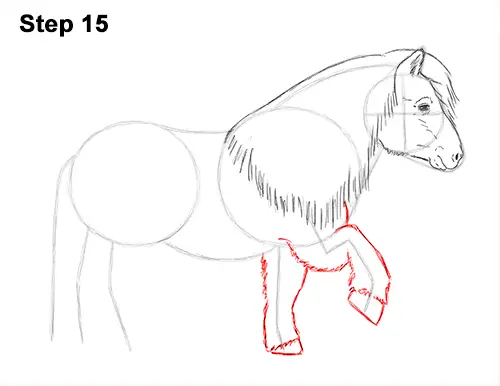
Step 15: Use the lines under the right side of the body as guides to draw the pony's front legs. Lightly sketch the shape of the leg as you follow the path of the guide line. Pay attention to how the leg bends. When you get the shape of the bent leg right, darken the lines. As you darken the lines, use quick, short strokes to give the coat a more furry look. Add a flat, rectangular shape at the bottom of the leg for the pony's small hoof.
Lightly sketch the front leg on the other side of the body as you follow the guide line. When you get the shape of the leg right, darken the lines using quick, short strokes. Add a small, flat, rectangular shape at the bottom for the hoof.
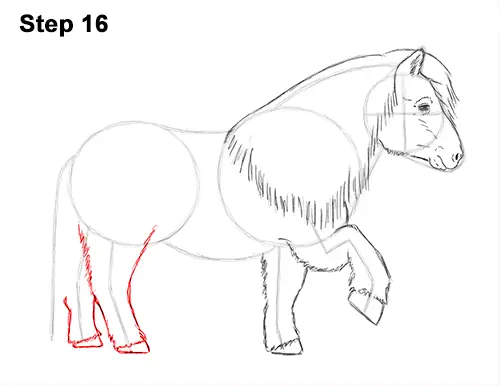
Step 16: Use the angled lines under the left side of the body as a guide to draw the pony's hind legs the same way. Sketch the leg lightly as you follow the guide, then darken the lines when you get the structure right. Use quick, short strokes as you darken the lines to give the coat a more furry look. Add the hoof at the bottom as a small, flat rectangular shape. Use the other line as a guide to draw the hind leg on the other side. Most of this leg will be hidden behind the first hind leg or the tail, so only draw the bottom portion of it.
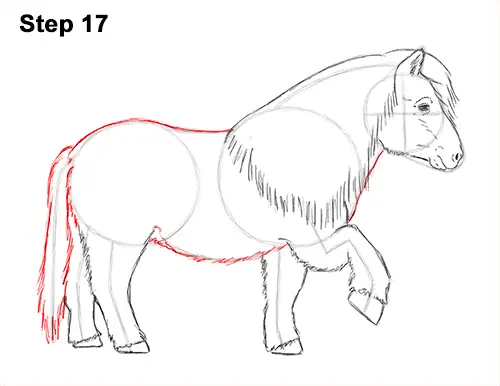
Step 17: Darken the outer edges of the initial guides to create the rest of the pony's body and tail. Use quick, short strokes as you darken the underbelly for the shaggy fur found there. Surround the initial guide on the left with a series of vertical strokes to create the shape of the tail.
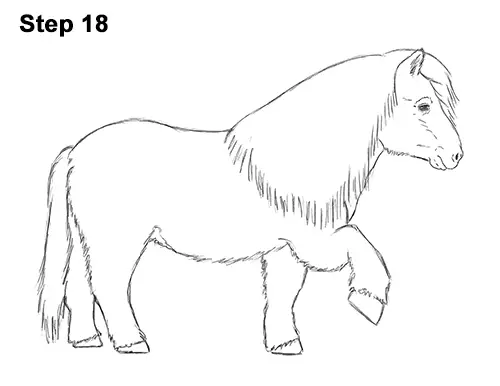
Step 18: For a cleaner look, erase as much as you can of the initial guide lines. Don't worry about erasing all of the guides. It's okay to leave some behind. Re-draw any final sketch lines that you may have accidentally erased.
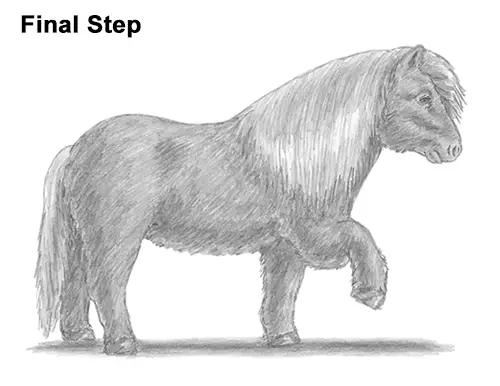
Final Step: Add some shading to your pony drawing to give it more dimension and volume. Pick the direction of the light source when shading so that the shadows are consistent with it. As you add the shadows, use strokes that go in the general direction of the fur. Vary the pressure on your pencil to get different degrees of tonal value. You can stop here for a white pony. For a black pony, skip the shadows and just use a single dark value all over the body.
Add a cast shadow underneath. This helps ground the pony so it doesn't appear to be floating.
You can add even more value throughout your drawing for extra detail. Ponies' coats can be a single solid color, they can have patches and they can even have spots! So shade yours however you'd like. Horses usually have smooth, shiny coats, but some ponies have shaggy coats, so make the coat a little furrier.
As you add the value, separate each individual stroke a bit to create a furry-looking texture. Shading can be very time-consuming, so be patient and take breaks. You can use a lighter value for the mane and the tail to separate the sections a bit. It's always a good idea to use reference as you draw. Remember to pause the video after each step to draw at your own pace.
Thanks for watching! Subscribe to the How2DrawAnimals YouTube Channel for a new tutorial every Tuesday.
To learn how to draw popular cartoon characters, visit EasyDrawingTutorials.com.
RELATED TUTORIALS
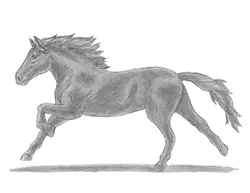 |
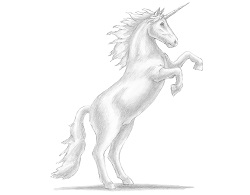 |
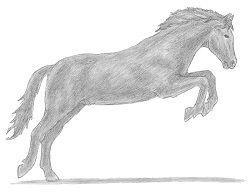 |







